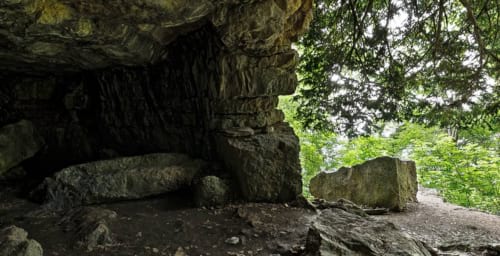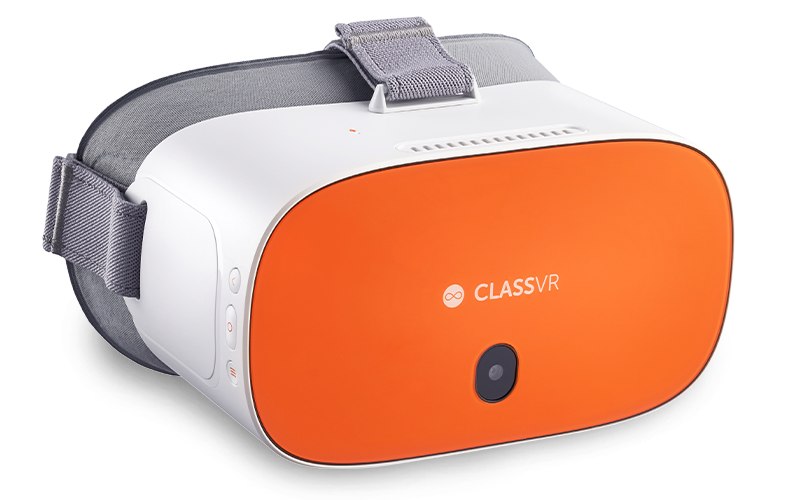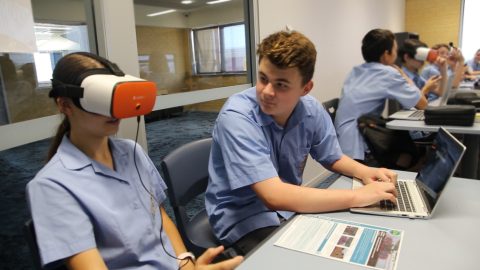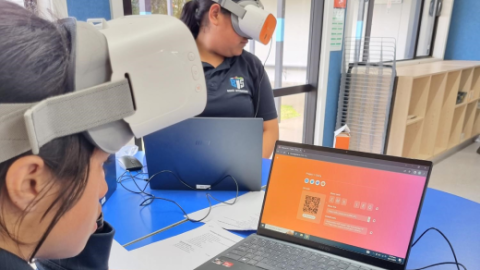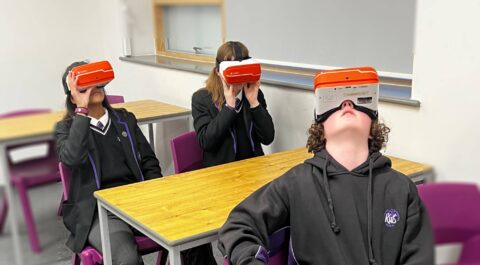The Integration of VR into Teaching and Learning at ESMS Primary School

“Virtual Reality is no longer inaccessible, unaffordable or unattainable. Neither is it a figment of science fiction, or merely a gaming accessory; its relevance in education is pertinent and hugely valuable. A fundamental cornerstone of my role as Head of eLearning at ESMS is to investigate and enhance our Schools through the effective use of technology. We do not wish to be known for what technology we use but for how well we use technology. It will not define us, nor will it be the focus of our teaching and learning. It will always be a resource, used simply to improve what we feel is already the highest standard of education.
At ESMS, it has been my privilege to introduce and extend the use of VR into our curricula. To date we have successfully enhanced our children’s learning from Primary 1 to National 5. By incorporating VR into aspects of our planning we have been able to deepen the learning and meaningful understanding of our children’s experiences at school. Is that not, in essence, what education is meant to do?”
Simon Luxford-Moore
School Teacher
The Specifics of VR Integration into ESMS’s Curricula – Primary
Primary 1 children in the ESMS Junior School study Fairy Tales as part of our Language curriculum in their final term. Historically they are visited by a dragon from the land of Fairy Tales, who brings sad tidings of the demise of traditional fairy tales due to the increasing disbelief of society. The children’s ‘job’ is to revitalise people’s believe in traditional tales by retelling and promoting fairy tales. Virtual reality has allowed us to capture the imagination and exuberance of our early learners by giving them opportunities to experience inside a real dragon’s cave, roam the woods in which dragons live and even to ride upon the back of a dragon. The ability to not only take in one’s complete surroundings but also the sounds and emotions which go along with these experiences is a wonderful thing to behold and adds immeasurable value to our children’s learning.
Primary 2 also use an imaginative element in their main Language focus. They are visited each year by magic carpets in each classroom. They arrive without warning and take the children to far-off lands for adventures and amazing escapades. Traditionally, the children begin this unit by investigating descriptive language and the sharing of vocabulary to describe what the world below them might look like, whilst flying on a magic carpet, forms part of their story. This year we used our VR headsets to take children on balloon rides, helicopter journeys and drone flights to experience what really being in the sky is like. The difference was phenomenal and the most notable improvement in the children’s vocabulary was emotional description. For the first time we noticed children going beyond what something might simply look like from above to also including what it felt like to be in the clouds and high above the ground. Emotive word choice adds great quality to writing and no reader would deny that being able to imagine oneself in the story is what keeps one coming back to read more.
In Primary 3 we study ‘Rainforests’. We look at the flora and fauna, climate and how the indigenous people have adapted their lifestyles to live harmoniously with their surroundings. Previously, we used images from textbooks and videos played through our Promethean ActivPanels to show the children what rainforests are like. Now we ‘visit’ them. I even explain how psycho schematics work to the children and tell them before they venture into the heart of the Amazon that their brains will start to ‘tell’ them that they will feel hot and humid. And true to my word, every child feels the heat and intense atmosphere of the world’s rainforests. This only adds to the worth and experience of the lessons and it helps to add a much greater value to the children’s learning. One Primary 3 boy explained to me that he loved using VR because, “With photographs and tv screens I only ever see things in the rectangle in front of me but, with the headsets, I can choose to look wherever I want.” He captured the essence of ownership over his own learning beautifully.
We study the Vikings in Primary 4 and we use VR to explore the ruins of the abbey at Lindisfarne, with footage I took myself. We begin by arriving at the beach, just like the first Viking raiders did over a thousand years ago. We listen to the waves and view the cliffs before us and this experience forms an integral part our diary entries, written from the viewpoint of a Viking. We then visit the ruins of the abbey as they are today and see first hand the height of the standing columns, the intricacy of the masonry and the sheer size of the cloisters. Virtual reality allows us the ease and accessibility of visiting the past.
So too, it allows us the ability to explore the future. In Primary 5 we study Space and the ability to visit Mars, in the tracks of the famous Rover, or hold Jupiter in one’s hand and see the iconic Red Spot, or simply fly through the vast void of Space need no real explanation to share the amazing value that can be added to an already fascinating topic. Using cross-curricular links with Art and Maths we invited the children to create a landscape of their alien’s home world. The focus was on how to create a fore-, mid- and background but we also learned how to incorporate a 2D landscape drawing on to a cube’s net. We scanned these and used PanoPainter to create a world, from the inside of a cube, which gave the children the chance, using the VR headsets, to visit their creation and better imagine what it would be like to be there. We had our very first virtual art gallery and invited guests to come and experience it for themselves.
History, by nature of the subject, is difficult to explore beyond textbooks. This is not just the chronology of the subject but also the inherent geography of far-flung battlefields or civilisations long gone. At ESMS, Primary 6 explores the Jacobites and, again with footage I took myself of the famous Soldier’s Leap at Killiecrankie and Culloden Battlefield, we ‘visited’ both sites with 360 video and still images. It gave a far better understanding of the sheer size and atmosphere of both iconic places. The footage of the Soldier’s Leap is taken right on the edge of the bank of the raging River Garry where the famous Donald MacBean allegedly leaped three and a half metres across to the other side in his attempt to evade Jacobite pursuers. There is not a risk assessment in existence which would allow children to stand there on a school trip and so, the sense of impressive awe which comes with seeing it first hand, is lost to our learners without VR.
Primary 7 uses VR specifically as part of the children’s study of Africa. Here we ‘visit’ schools in South Africa and Tanzania to compare our schooling and ways of life. It is an incredibly humbling experience for our children to see how privileged we are with what we consider basic resources in the classroom, when they see how children learn with far less and still have beautiful smiles on their faces. Needless to say, we stand amongst lions, rhinos and elephants, as well as see the world from the eyes of an ant. Our learners get the experiences and emotions which come from being an arm’s reach from some of the world’s most dangerous (and endangered) animals but without the risk of harm. Truly the best of both worlds!
